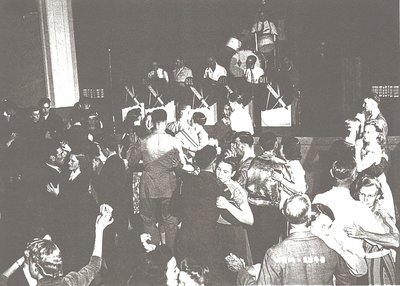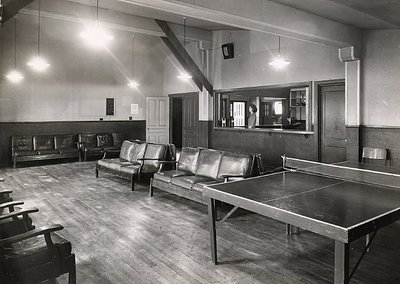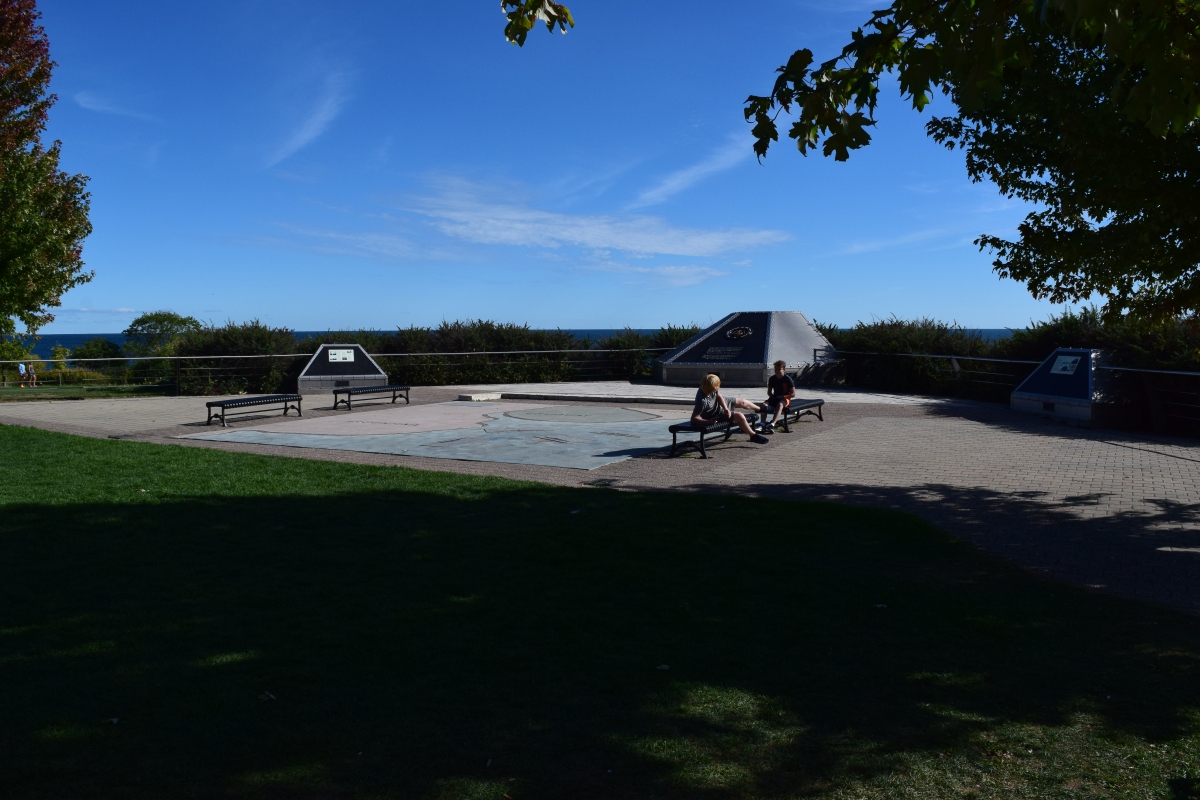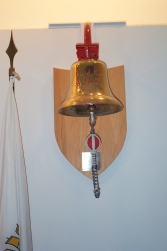Leisure time was a luxury when you had to work eight-hour shifts on your feet per day. Even weekends would be often spent catching up on some sleep or doing your laundry. On occasion, the Ajax D.I.L. workers had some leisure time and perhaps the energy, and would enjoy a dance or a game of bowling at the old Recreation Center.
This building was one of the most beloved and memorable places of Ajax’s wartime years, and throughout the following decade. The Recreation Centre was always present in the collective memories of former workers and residents who grew up there when Ajax was starting to transition from a factory town to a dormitory community. Built in 1941 and fondly remembered as Rec Hall, many Ajacians recall it as a beautiful place with shiny, hardwood flooring, and a place where memories of going dancing flourished. There was a stage about sixteen-feet big, complete with a concert organ, which hosted several touring big bands, during that time. Its director, Harry Brock, became a local celebrity, who was the person who brought this level of live entertainment to the men and women of D.I.L. Overall, it was a great social hub in between the long weekdays of shift work, as well as a space for sporting activities, both for men and women. It also hosted a bowling alley, a tennis court, and a field for a women’s baseball team.
Unfortunately, the building was destroyed by a fire in 1966. However, memories of Rec Hall are just as vivid today as it was in its heyday. Images, such as the ones shown above, carry on its legacy as a vigorous place filled with music and fun, an escape from the harsh realities of wartime. Shortly afterward, a new community centre was built on Centennial Road, just north of the hospital. It still runs today as the Ajax Community Centre, for all Ajax residents to swim, play ball, or enjoy endless activities during their spare time.











